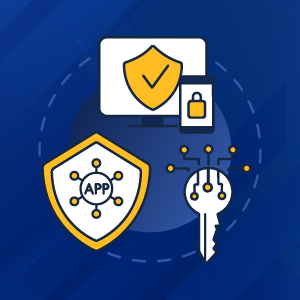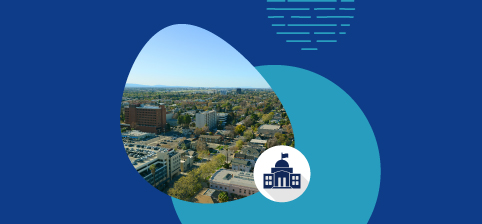What is TMF?
The Technology Modernization Fund (TMF) is an action plan created as part of the 2017 Modernizing Government Act. The goal is to have a funding vehicle that would aid agencies in accelerating project completion. This is enacted via a loan which will be repaid based on individual project agreements. In order to implement and perfect technology modernization, the Technology Modernization Board (TMB) prioritizes projects that engage several agencies at once, address security gaps, and improve the public’s access to services. The TMB is responsible for eighteen different projects across ten federal agencies, seven of which were awarded American Rescue Plan (ARP) funding to address urgent IT modernization challenges.
How it Works
The fund is overseen by the TMB, which is comprised of government IT officials and cybersecurity experts with expertise in technology, transformation, and operations. The board reviews IT-related project proposals submitted by government agencies to determine which projects deserve funding, and how much. Priority is given to proposals which meet certain criteria [1] such as improving security, increasing operational efficiency, and adapting scalable technology. Since its inception, the TMB has loaned hundreds of millions of dollars to agencies and programs such as Foreign Labor Application Gateway and Farmers.gov. Technology modernization proposals are sent to the board through a two phased approval process.
The first phase is the Initial Project Proposal (IPP). IPPs act as a low burden prescreening for both agencies and the Board. Agencies submit a rough outline of their project proposal, while only approved and unique projects go to the Board for review. In their proposal, agencies must discuss a general plan process and whether project funding has been explicitly denied or restricted by Congress.
The second phase, the Full Project Proposal (FPP), is submitted directly to the Board. FPPs must have a comprehensive description of the proposal, project milestones, and a funding schedule. Agencies should also have a pitch presentation prepared for the Board.
Once funded, TMF projects are reviewed quarterly by the Board to ensure milestones and schedules are met. Corrective action is implemented when necessary to help agencies remain on track, and technical experts are there to provide support to teams to improve capability and fix troubleshoot issues.
TMF’s Importance Today
The TMF process is helpful as it provides greater flexibility to agencies and funds technology modernization efforts by allowing repayment options and payback terms for up to five years. Across the board, government agencies have accelerated modernization efforts because they no longer need to wait for funding. Now, agencies can act and gain funding as the project goes on. Oftentimes, company departments that are overlooked by either the government or their own agency will go through the TMF to gain adequate funding for important projects. This financing shows that accountability and oversight make a difference. It allows agencies to provide new capabilities in a timely manner in a rapidly changing environment. Without the TMF loans, these contributions, delivery, and improvements would not be possible.
Modernizing Zero Trust
One of the eighteen funded projects allows the U.S. General Services Administration (GSA) to modernize legacy network systems and implement an advanced zero trust architecture [2]. Through technology modernization funds, the GSA will advance zero trust architecture by improving zero trust blocks. Firstly, the GSA will replace directory designs to meet the new expectations of hybrid cloud architecture. These updates will be multi-domain and multi-cloud applicable. Secondly, it will develop modernized enterprise single-sign-on that will include multi-factor authentication. This way, security will be improved by a micro-segmented authentication system that adheres to a zero trust strategy. Lastly, the GSA will add artificial intelligence and machine learning driven algorithms to help detect threats to systems. All together, these measures will help protect government clients’ sensitive information from bad actors.
 Data Modernization
Data Modernization
Another project goal is to modernize the Department of Labor (DOL)’s enterprise data management and analytics capabilities. The aim is to improve the availability and analytic capabilities of data to developers, journalists, researchers, and other federal agencies. Currently, the DOL faces issues with data consistency, quality, and availability. Proposed improvements include incorporating predictive analytics software to report capabilities to the DOL’s IT department, and implementing data management capabilities and to support application programming interface (API). This would share data with both the DOL and the public. These efforts could aid in cost savings, increased efficiency, and improved services [2].
TMF and Multicloud Services
One initiative that the TMF has provided funding for is cloud-based security enhancements. So far, these include funding for:
- The United States Department of Agriculture (USDA), to complete migration to the cloud for all applications ($500 thousand)
- To the Department of Energy (DOE), to migrate enterprise emailing to the cloud ($3.7 million)
- To the U.S. Department of Housing and Urban Development (HUD) to move critical business systems from on-premises databases to the cloud ($13.8 million) [3]
Single clouded services have limited control and less flexibility. With the combination of two or more public clouds, private clouds, or a combination of both, an agency will gain better control and oversight on the cloud. This will allow a customer’s sensitive information to be better protected. This is especially important in light of 93% of businesses are moving to multi-cloud architecture [4].
The Future of TMF
With the Technology Modernization Fund, government agencies are able to improve their cybersecurity, increase data management capabilities, and support the public they are created to serve. TMF acts as a mitigated process to gaining funding for projects. Due to the implementation of the TMF, improvements in security such as multi-factor authentication, API, zero trust, and segmentation were enacted in the federal government. Because of TMF, government agencies are better able to serve customers by keeping their information secure and meeting their constituents and employees’ needs in a modernized, efficient, and scalable manner.
View Adobe’s Experience Cloud Demo page for more insights on Technology Modernization Fund and cybersecurity. Need assistance? Check out Carahsoft’s Microsoft support portal for support on cloud architecture and other Microsoft solutions.
[1] “Awarded Projects,” The Technology Modernization Fund. https://tmf.cio.gov/projects/
[2] Miller, Jason. “Special Report: Benefits of Technology Modernization Fund Validated,” Federal News Network. https://federalnewsnetwork.com/reporters-notebook-jason-miller/2020/11/special-report-benefits-of-technology-modernization-fund-validated/?_sm_au_=iVVnDfDJW3W3ZHZskN1JRKsp6MH81
[3] Wiggins, Don. “Advance Your Government Mission with Secure Hybrid Multicloud,” Equinix. https://blog.equinix.com/blog/2021/02/16/advance-your-government-mission-with-secure-hybrid-multicloud/
[4] Parmar, Dipti. “Why Organizations Need a Multicloud Strategy and How to Create One,” The Forecast by Nutanix. https://www.nutanix.com/theforecastbynutanix/technology/why-organizations-need-multicloud-strategy






